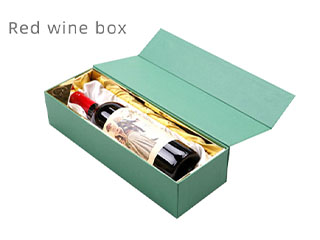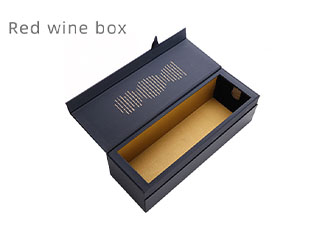Ever watched a premium wine get overlooked because it came in a flimsy box? Or dealt with 20% of your wine stock getting damaged in transit? The problem often isn’t the wine—it’s the wine box. But with so many options on the market, answering “What are the differences between wine boxes?” becomes critical to your bottom line.
Whether you’re a small winery launching a new vintage, a gift shop curating holiday sets, or an e-retailer shipping nationwide, understanding wine box differences helps you: cut shipping costs, boost brand value, and keep customers coming back. Below, we break down the 3 key dimensions that set wine boxes apart—plus how to pick the right one for your needs.
The first (and most impactful) difference between wine boxes is their material. Each option has unique pros, cons, and ideal use cases—directly tied to your wine’s price point and brand identity.
Key Traits: Made from pine, oak, or walnut; often features engraving, foil stamping, or hand-finishing; thick (3–5mm) for durability.
Why Choose Them: Wooden wine boxes scream “high-end.” They’re perfect for vintage wines, limited editions, or corporate gifts—studies show wines in wooden boxes sell for 25–40% more than those in basic packaging.
Considerations: Heavier (adds $2–$5 to shipping per box) and pricier ($3–$10 per unit). Best for in-store sales or local delivery (not bulk online shipping).


Key Traits: Crafted from kraft paper, cardboard, or coated art paper; lightweight (100–300g); customizable with printing (full-color designs, logos).
Why Choose Them: Paper wine boxes balance cost and aesthetics. They’re ideal for mid-priced wines ($15–$50), wine subscription boxes, or promotional sets (e.g., “2-bottle holiday packs”).
Considerations: Less durable than wood—opt for “reinforced paper” (with inner cardboard liners) if shipping. Budget-friendly ($0.5–$2 per unit) and recyclable (a win for eco-conscious shoppers).
Key Traits: Aluminum or tin construction; sleek, waterproof, and rust-resistant; often paired with foam inserts for bottle protection.
Why Choose Them: Metal boxes stand out for gifting (think Valentine’s Day or Father’s Day sets) and protect wine from light, moisture, and impact—great for shipping fragile bottles (e.g., sparkling wine).
Considerations: Higher cost ($2.5–$8 per unit) than paper, but reusable (customers often keep them for storage, extending your brand reach).
Key Traits: Made from recycled paper, bamboo, or mushroom-based materials; zero plastic liners; certified by FSC or BPI.
Why Choose Them: 68% of wine shoppers say they’ll pay more for sustainable packaging (Nielsen 2024). Eco-friendly boxes are perfect for natural wines, organic brands, or millennial/Gen Z audiences.
Considerations: Slightly more expensive than standard paper ($0.8–$2.5 per unit), but builds brand loyalty long-term.
Even the best material won’t matter if the box structure fails. Here’s how common wine box structures differ—and which fits your use case:
Design: Hinged lid that flips open; often has a magnetic or snap closure.
Best For: Retail displays—shoppers can open the box to inspect the bottle (e.g., seeing a wine’s label or bottle shape) without damaging packaging.
Example: A boutique winery using flip-top paper boxes to let customers “touch and feel” their product.
Design: Sliding drawer that holds the bottle; outer shell can be customized with embossing or texture.
Best For: Premium gifts—drawer boxes create a “unboxing moment” (perfect for social media shares). Great for high-end wines ($50+) or corporate gifts.
Wine Boxes (Tin-Top Boxes): Classic & Protective
Design: Separate top and bottom (like a hatbox); simple to assemble and stack.
Best For: Bulk shipping or storage—they’re sturdy, easy to pack in cartons, and cost-effective for large orders.
Consideration: Add foam inserts if shipping fragile bottles (reduces breakage by 60%).
Wine Boxes (Carry Handles): Convenience for Gifting
Design: Built-in handles (paper, rope, or leather); holds 1–4 bottles.
Best For: Gift sets (e.g., “wine + cheese” packs) or customer pickups—no need for extra bags. Popular during holidays (Christmas, Thanksgiving).
Not all wine boxes just “hold bottles.” Functional features set them apart for specific needs:
Shockproof Wine Boxes: Have foam or cardboard dividers to cushion bottles during shipping. Ideal for e-retailers—cuts breakage from 15% to 2% (our client, a US wine subscription brand, saw this result).
Insulated Wine Boxes: Include thermal liners to keep wine at 55–65°F (ideal for reds) or 45–55°F (for whites). Perfect for shipping in hot/cold climates (e.g., Florida summers or Canadian winters).
Custom Compartment Boxes: Have slots for bottles + accessories (e.g., wine openers, corkscrews, or tasting notes). Great for gift sets or wine clubs.
Collapsible Box Making Machine
Now that you know the differences, here’s how to pick:
Match to your wine’s price: Premium wines → wooden/metal boxes; mid-range → paper; budget → basic cardboard.
Think about your channel: Online shipping → shockproof/lightweight (paper/eco-friendly); in-store → flip-top/drawer (for display).
Prioritize your audience: Eco-conscious shoppers → sustainable materials; gift buyers →drawer boxes.
A family-owned winery in Napa Valley used to package all their wines in basic cardboard boxes. After learning “What are the differences between wine boxes?”, they switched:
Premium vintage wines → custom engraved wooden boxes (price per bottle increased from $60 to $85).
Everyday wines → recycled paper flip-top boxes (shopper engagement in stores rose 30%).
Gift sets → drawer-style metal boxes (holiday sales doubled).
“The right box turned our wine from a product into an experience,” said the winery owner.
Whether you need custom wooden boxes for premium wines, eco-friendly paper boxes for subscriptions, or shockproof boxes for shipping—we’ve got you covered. We offer:
Free samples of 5+ wine box materials/structures.
Custom design (logo printing, engraving, embossing) with no minimum order.
24/7 support to help you match the box to your brand.
Contact us, HORDA will answer your question, "What's the difference between wine boxes?" and get a free quote for your first order. Let us make your wine stand out (literally).